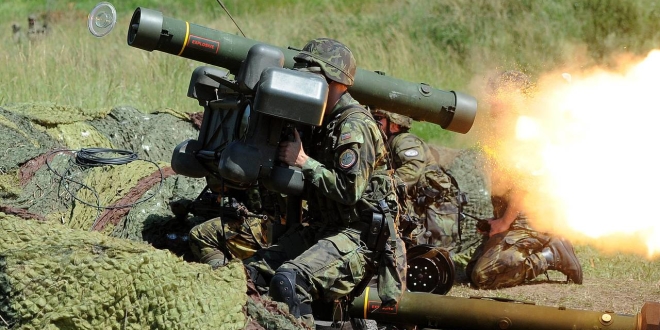Sophisticated Russian electronic-warfare systems and jamming technology are posing an acute challenge for allied forces training in Eastern Europe, U.S. Army officials said Tuesday.
While the U.S. has sold sophisticated radios to many allied nations, including Baltic countries, U.S. export regulations prohibit the military from sharing the most secure encryption that would prevent Russians from intercepting and decoding transmissions.
U.S. officials said Russia has invested heavily in technology designed to both intercept communications and jam radio transmissions, and it has developed new equipment to identify the source of allied transmissions. Intelligence officials also say Russia has become better at masking its own communications to keep its planned military movements secret.
While Russia has acknowledged their military investments, a spokeswoman for the Russian mission to the North Atlantic Treaty Organization didn’t respond to a request for comment on Tuesday.
Platoons of Lithuanian and American soldiers conducted a mock assault in a training area of eastern Lithuania on Tuesday, but the officers overseeing the drill said maintaining secure communications remains a prime difficulty
“It can be a challenge to communicate securely on a tactical level,” Brig. Gen. Michael Tarsa, the deputy commander of the U.S. 4th Infantry Division, said.
Without secure communications, allied militaries must refrain from giving away their positions or relating the position of their headquarters units, U.S. military officials said, making coordinating operations more difficult.
The U.S. has sold to many nations, including the Baltic countries and Ukraine, sophisticated Harris Corp. radios that are capable of highly secure communications. Still the export version of the radios don’t have the same level of encryption as U.S. radios.
Some in the U.S. want to allow allied nations to use the same encryption technology used by U.S. forces. Other policy makers think that sharing the technology could allow it to be compromised by Russian agents.
NATO’s Transformation Command is working on a new radio technology that could be jointly adopted by the alliance and allow for more seamless communication, but the system isn’t yet ready to be deployed.
To overcome the problem, U.S. and Lithuanian forces conducting exercises near the Russian border have resorted to swapping noncommissioned officers, putting radio operations in each other’s units, said Capt. Helaman Fepuleaui, a company commander with the 173rd Brigade. Since U.S. personnel can use encrypted radios, sending the so-called liaisons to the Lithuanian units allows secure communication.
Using liaisons to embed inside allied units is tried and true method that goes back to previous wars, military officers said. But it can reduce the combat power of both units and require more radio operators.
Still, Capt. Fepuleau said that, despite the challenges over the past weeks of training, the Lithuanians and Americans have taken on increasingly complex operations. Over the weekend, a combined team of American and Lithuanian soldiers jumped out of helicopters into a lake, in an operation they called a “helo cast.”
And on Tuesday the U.S. and Lithuania platoons plotted a mock assault on a structure coordinating their approaches—despite the communication problems—and obscuring their assault with smoke grenades.
At a news conference following the joint exercise, Gen. Odierno said coordinating the work of small units is one of the most difficult parts of joint operations. He said showing that the U.S. and Eastern European allies could work together at the tactical level would help deter aggression by Russia.
“It shows we are capable of working together and that sends a strong signal to anybody,” he said.
Gen. Odierno said it is “our responsibility to protect our NATO allies” adding that he wanted to see more large-scale, multinational exercises aimed at boosting defenses in Eastern Europe.






